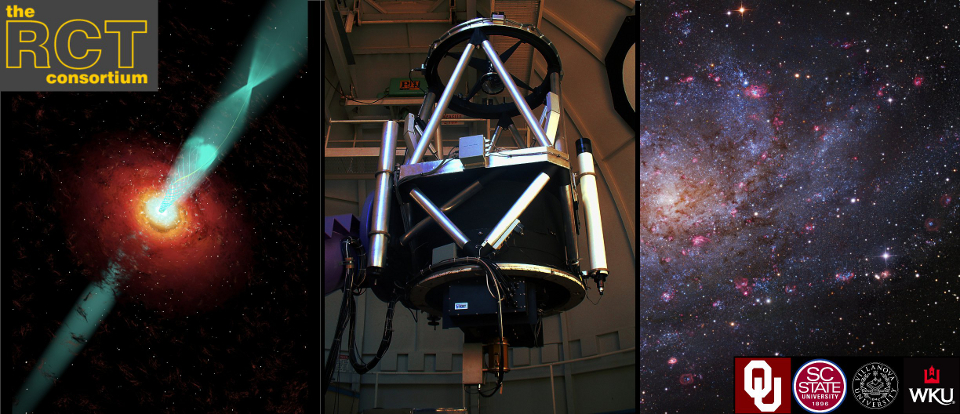Blazars are extreme examples of the phenomena known as Active Galactic Nuclei (AGN). AGN are found in the center of otherwise normal galaxies. The difference between an AGN and a “normal” galaxy nucleus is that in the AGN copious amounts of material are being accreted onto the central supermassive black hole. Many different types of astrophysical sources are included under the heading of AGN. Our current understanding of these objects is that they all have the same internal structure; we see different behavior because we are looking at the objects from different viewing angles. The picture below shows the generic internal structure of an AGN, as well as the different objects we see by looking at it from different viewing angles.

In the blazar class of objects, we are looking almost directly down the throat of the relativisitic jet; thus we are able to study the behavior of the relativistic jet. One of the defining characteristics of the blazars is that they vary thier energy output on timescales of minutes to decades at all wavelengths. These variations are not regular; thus we must observe the sources as often as possible because one cannot predict what they will be doing night to night, hour to hour or even minute to minute. The RCT is able to study the variable energy output of these sources at optical wavelengths. These observations are then combined with observations by our collaborators obtained at other wavelegnths, which provides a picture of the behavior of the material in the relativistic jet.
It is very exciting to blazar scientists when one of these objects undergoes a large change in its brightness. This happpened this year to the blazar MKN 421. Below is the RCT R band (optical) light curve during this outburst.
The blazar program on the RCT studies a sample of blazars that are known to be bright and active an much higher energies, specifically at Gamma Ray and TeV energies. We are able to measure the brigtness to a precision to a few percent or less, depending upon the specific source and the observing conditions In addition, we are also studying potential new blazars found in the field of view of NASA’s Kepler spacecraft. Finally, we also study a small number of bright, highly active seyfert galaxies.
